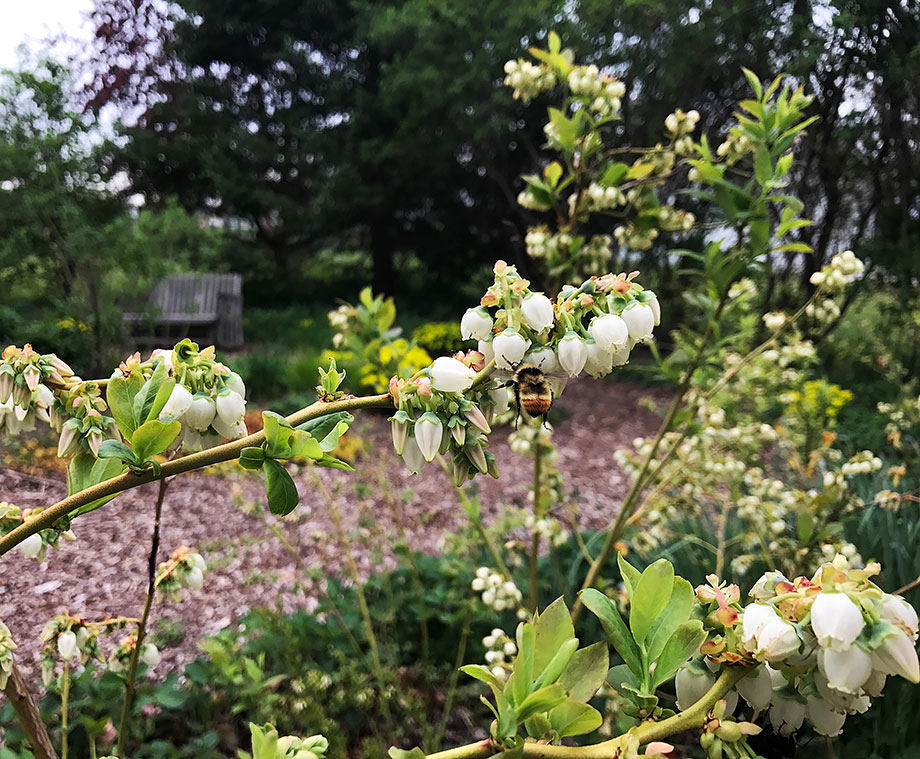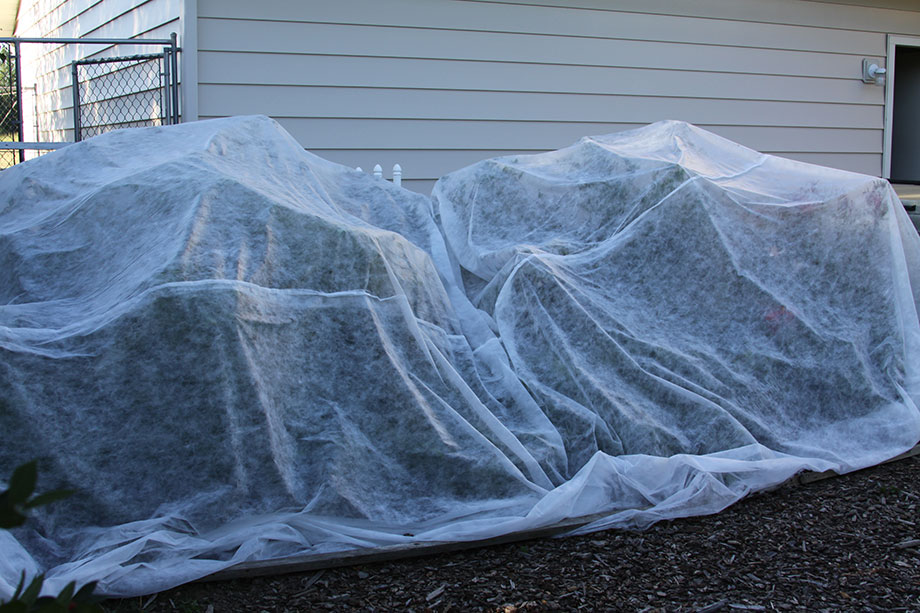March 21 Column: Blueberries

Eating fresh blueberries from our garden is one of my favorite summertime treats. Did you know they’re quite easy to grow? In this week’s column, I go over the cultural needs of blueberries. Here’s a link to it in today’s edition of The Spokesman-Review: Growing blueberries is a treat for yourself. (you can also read the text of my column at the bottom of this post)
Blueberries need lots of sunlight and an acidic soil that has a pH between 4.5 and 5.5. Depending on where you live, the soil pH can really vary. It’s important to test your soil’s pH first… and preferably several months before you plant them, but I know how challenging that can be! If your soil is too alkaline or too acidic, then you will need to add soil amendments to adjust it. This should be done slowly. To be honest, I didn’t go into detail about this part in my column for a few reasons:
- I didn’t have enough room to go into the finer details about what to add and how much, etc.
- I think it’s really important to consult with your local Master Gardener volunteers for advice because they will be knowledgeable about the pH of local soils AND what you need to add to your blueberry bed in order to make the plants happy. If you don’t know how to find your local Master Gardeners, here’s a link that will help you if you live in the U.S. or Canada.
- And finally, we gardeners like quick fixes but can go overboard on adding soil nutrients. It’s so important to take it slowly and use the right amendments, based on sound advice.
Another thing I didn’t have room for in my column is just how easy blueberries are to preserve. In addition to having plenty to eat fresh off of the plants, you probably want to save some for, say, your bowls of oatmeal over the winter or for baking, right? Well, all you have to do is fill freezer bags with the berries and pop them into the freezer. You can’t get any easier than that! You don’t even need to freeze the berries in layers on cookie sheets first (prior to adding them to the freezer bags) because the berries don’t stick to each other.
One last thing: certain birds (esp. robins) LOVE eating blueberries right off the plants. That is so annoying! Here’s what Bill and I do to prevent this from happening: a few years ago, I sewed together two large pieces of floating row cover that would fit over our blueberry patch. We let the green blueberries grow for a while, but just as they begin turning a very pale blue, we cover our patch and weigh down the edges with rocks or boards. Why not just use bird netting, you ask? Well, we tried that first. Here’s what happens: the blueberries get caught in the netting. When you lift off the netting to pick them, the berries go flying EVERYWHERE. Not good. Hence, the photo to the left of our set-up! This has worked really well for us.
For this week’s video, I decided to focus on cleaning up one of my flower and rose beds so I could pass along some tips on how best to accomplish that. I shared a lot of information on pruning roses, which I hope you’ll find helpful. Enjoy!
And last but not least, here is my column on growing blueberries:
by Susan Mulvihill
Do you love the idea of snacking on a handful of sun-ripened blueberries? You can make that happen by adding blueberry bushes to your landscape. If you need a bit more convincing, consider these two redeeming qualities of the plants: attractive cream-colored blossoms in the spring and claret-colored leaves in the fall.
Blueberries don’t require a lot of room and are pretty straightforward to grow, if you understand their primary needs of full sun and well-draining, acidic soil.
Northern highbush blueberries perform well in the Inland Northwest. There are also dwarf blueberries for growing in containers. Even though Spokane is in USDA hardiness zone 6, choose varieties that are hardy down to zone 5 to be safe. The plants are self-fruitful but will produce more and larger fruits if you plant one or two other varieties as pollinators.
Our blueberry season runs from late June through early September. Here are some examples of varieties that do well here: Duke, Earliblue, Patriot and Spartan (early); Bluecrop and Bluejay (midseason); and Darrow (late). Purchase plants from your local garden center in early spring since they sell out quickly.
Blueberry bushes can live up to 50 years so it’s important to get them off to a good start. After selecting a site, test the soil pH. Garden centers sell simple kits while professional soil tests will provide more detailed results. The goal is a pH level between 4.5 and 5.5. Most soils in this region range between slightly acidic and slightly alkaline. Consult with your local Master Gardeners for advice on how you can adjust the soil pH slowly.
Plant bushes 3 feet apart in holes that are the depth of the root system. Add a 2-inch-deep layer of mulch around the plants. In subsequent years, you can increase to 4 inches of mulch. This will suppress weeds and conserve soil moisture.
Here’s the hard part: remove all flowers from each plant during their first growing season. Even though it would be nice to have fresh blueberries right away, it’s more important for the plants to develop a good root system and branching structure.
Beginning the second year, fertilize the plants each spring. Organic blueberry fertilizers are available at garden centers but if you have trouble locating some, fertilizers for acid-loving plants will do the job. Always follow the label directions.
In the third year, start an annual pruning routine. Late winter is an ideal time. Begin by removing dead or damaged canes (the upright branches) first. Then lightly prune the plants to maintain an open growth habit; this will allow more sunlight to hit developing berries. Established plants should have a mix of 1, 2 and 3-year-old canes. How can you tell the difference between them? The newest canes are shiny and green. Two-year-old canes will be yellow-green and have a little bark developing on them. Three-year-old canes have what I call a “gnarly” appearance, where they are completely covered with a gray-brown bark. Follow the canes down to the crown of the plant to make your cuts.
Remember that blueberry bushes have fine, shallow roots. While it’s important to keep up with any weeds that pop up, keep cultivation to a minimum to avoid damaging their roots.
Once you start allowing your blueberry bushes to bear fruit, it’s a treat watching bumblebees diligently visiting the blossoms to pollinate them. You’ll soon start spotting green berries that will slowly develop into the delicious fruits you’ve been dreaming of.
Susan Mulvihill is author of “The Vegetable Garden Pest Handbook.” She can be reached at Susan@susansinthegarden.com. Watch this week’s “Everyone Can Grow a Garden” video at youtube.com/susansinthegarden.


